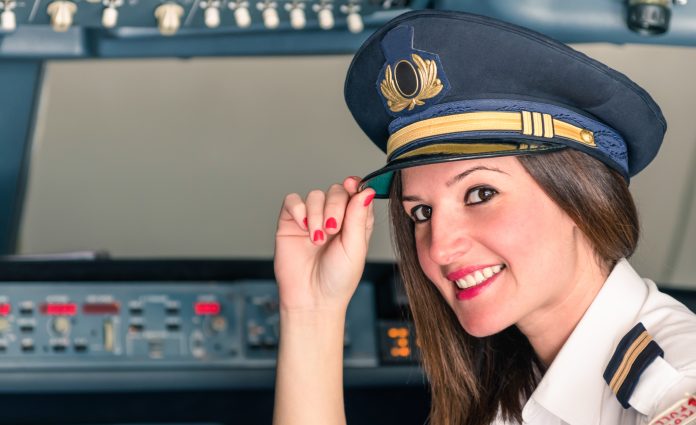Bhanu Choudhrie, Founder of Alpha Aviation, discusses how the aviation industry must adapt in order to overcome challenges in pilot training in a post-COVID-19 world, highlighting the need to address gender imbalances
Prior to the COVID-19 outbreak which has temporarily grounded the aviation industry, the emergence of a new global middle class, more affordable airlines and falling fuel prices had driven a sharp demand for commercial flights across the globe. This demand was particularly accentuated in areas such as the Asia-Pacific, where socioeconomic change is most pronounced.
Now, airlines are at risk and when air travel does return, we are likely to see a spike in prices for consumers. This will have a subsequent operational impact on the wider aviation sector which will require changes to the way pilots are trained in order to ensure there is not a pilot shortage in the mid to long-term.
According to Boeing, by 2038 the commercial aviation industry will require an additional 804,000 pilots worldwide to meet the demand. The need for new pilots in the Asia Pacific region is greatest, with a requirement for 266,000 new pilots.
Pilot training
In a post-COVID-19 reality, pilot training facilities are just as at risk as airlines and we are likely to see a consolidation of the sector with only those who have strong cash reserves outlasting the pandemic.
Airlines will need to rethink their pilot training strategy which is likely to include a need to outsource and decentralise to ensure they are streamlining and managing costs. At the same time, pilot training providers will need to be more flexible with their price offering to airlines and recognise airlines’ need to manage their overhead as well.
Trained pilots will require updates and renewals to their licences once air travel resumes and regulators will also need to make changes to the training process. There will need to be more reliance on e-learning in the initial cadet training, and subsequent simulator training will also be important. The industry is equipped to make these changes but dynamism from regulators is imperative.
Solving that impending shortage challenge requires a variety of solutions, and one not to be overlooked is creating a clearer path for more women to become pilots.
Just 5% of the world’s 290,000 commercial pilots flying today are women, meaning that for every twenty flights taken, just one of them will be piloted by a woman. If we are to make up the future shortfall in the sector, finding a way to shift that percentage is essential.
At Alpha Aviation, we own two international training facilities, in the UAE and in the Philippines. The success of those businesses is grounded in the fact that we are providing talent that the industry sorely needs, but more recently we are seeing a trend towards more women coming to us with a view to taking up a career in aviation.
This change is being driven by broader attitudinal shifts in the sort of jobs women see themselves working in, and by a number of trailblazers who are raising the profile of women in aviation and demonstrating to their peers that there is a path to attain their dream career.
Gender imbalance
One of our missions at Alpha Aviation is to redress the gender imbalance with the industry by challenging stereotypes and empowering more women to pursue a career in the cockpit. Our current Filipino course intake is 12% female, which is well above the industry average.
Having those positive role models is essential. We were incredibly proud at Alpha Aviation to help the first female Emirati pilot to fly with Air Arabia to graduate, Ghada Al Rousi, who graduated from our UAE platform has received widespread acclaim in the press for breaking the glass ceiling and speaking about her experiences of becoming a pilot.
We have adopted multiple strategies to effect change in how we train cadets and make our training courses more accessible to them. In addition to the cultural barriers that prevent some from pursuing a career as aviator, there are socioeconomic barriers which can be equally difficult to surmount.
Training to become a pilot has traditionally been a lengthy and expensive process. It is for this reason that our UAE base runs the Multi-Crew Pilot License (MPL). This is a shorter, more simulator-focused way of training that opens up opportunities for prospective cadets from less privileged backgrounds, and for who will be immediately placed with our partner Air Arabia as a First Officer at the successful conclusion of their training.
Without compromising on quality, it is a way to fast-track cadets into an airline environment, where they can complete the final steps of their pilot training while serving as a First Officer. The shortened time and lessening of the costs creates opportunities for those who otherwise might not have them.
That financial cost can seem more pronounced to women, for whom a path into a career in aviation has not been laid out traditionally. Another way to circumvent this, and give confidence to those who might feel they are taking a risk in pursuing a change in career to become a pilot, is to offer a bursary programme.
Wider industry programmes including Women in Aviation week are also key to continuing to evolve the narrative around female pilots. Most of the aviation sector take part every year and as dates like that grow and become more central – as International Women’s Day has effected change across a range of sectors – I believe we can expect to see more progress.
It’s a challenging yet exciting time for the aviation industry, people have more opportunities than ever before, but it will require coordinated solutions from every player to ensure the industry rises together.











